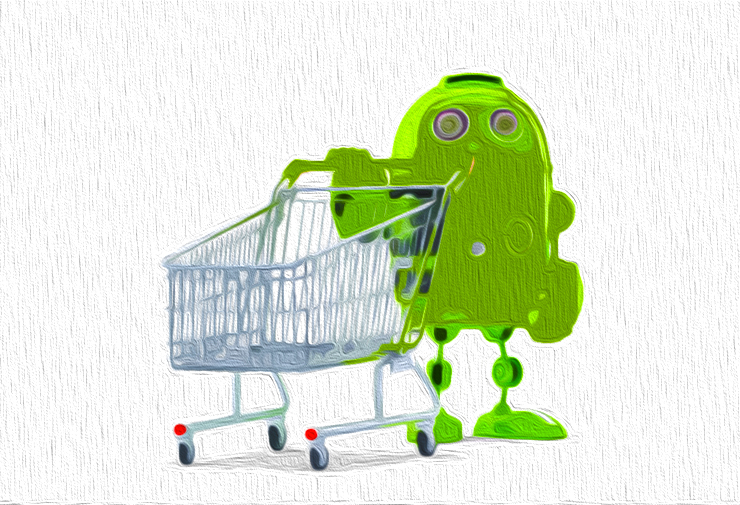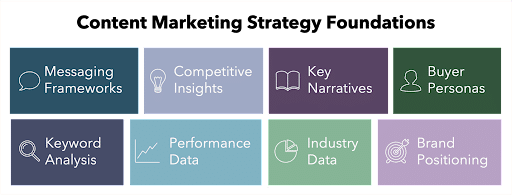
Content marketing's landscape is shifting with the integration of AI, bringing both excitement and uncertainty. Many content marketers are facing challenges with the emergence of OpenAI, new content tools, and evolving best practices. However, sticking to the fundamental principles of content creation can provide a solid foundation to navigate through these changes and propel our profession forward.
The Importance of Content Foundations
Content foundations serve as the building blocks for a robust content strategy. These foundations encompass essential elements such as buyer profiles, industry and competitor data, search keywords data, content performance metrics, and key messages. They play a pivotal role in shaping an effective content strategy.
The Power of Storytelling
Storytelling is a crucial component of content creation. Stories have a lasting impact as they are 22 times more memorable than mere facts. Crafting narratives that resonate with the audience is key to engaging and inspiring action.
Unveiling the Hero's Journey Framework
The Hero's Journey Framework, popularized by renowned mystologist Joseph Campbell, outlines a powerful narrative structure for business stories. This framework consists of three acts:
1. Departure
A mentor assists the hero in preparing for an unknown journey.
2. Initiation
Enemies challenge the hero, testing their abilities through various trials.

3. Return
The hero receives rewards and embarks on the journey back to familiar grounds.
Modern-day examples like Harry Potter exemplify the hero's journey, where the protagonist faces challenges, learns, and overcomes adversaries, mirroring businesses' mission to aid customers in overcoming obstacles.
Implementing Hero's Journey Narratives
Integrating Hero's Journey narratives into various facets of business can yield significant benefits:
Writer Onboarding
Utilize narratives during writer onboarding to provide a deeper understanding of the business mission, fostering better content creation.
Employee Buy-in
Engage employees by sharing the company's story during meetings, enhancing their connection to the organization's mission.
Create Content
Generate compelling and emotionally resonant content based on the hero's journey narrative, fostering deeper audience engagement and connection.

Starting Your Hero's Journey Story
While data and facts are essential in content strategy, integrating storytelling can drive action and engagement. The Hero's Journey framework offers a structured approach to crafting narratives that captivate audiences. Resources like the Joseph Campbell Foundation and online courses can aid in mastering this narrative technique.
By weaving compelling stories into your content, you can surpass industry norms and connect with customers on a deeper level. Embracing the hero's journey can transform your content marketing strategy and set you apart from competitors.
The journey of content creation, much like the hero's journey, is filled with challenges and rewards. By leveraging storytelling and the Hero's Journey framework, you can create impactful narratives that resonate with your audience and drive meaningful action.
Frequently Asked Questions
What kind of eCommerce Marketing Strategy Should I Follow?
There are three main types of eCommerce marketing:
- Direct marketing
- Search Engine Optimization, (SEO)
- Social Media Marketing
Direct marketing means sending emails directly at potential buyers. These emails could contain discounts, coupons, and other special offers. This type marketing aims at building customer loyalty and trust.
Search engine optimization is the process of improving your website's ranking in search engines such as Google, Yahoo!, and Bing. If your website ranks near the top for searches related to keywords, you will get more traffic.
Social media marketing involves websites such as Twitter and Facebook, Pinterest, Instagram and YouTube. Connect with your audience. It is easy to use and free of charge.
Each of these methods has its pros and cons. SEO, for example, requires time and effort while direct marketing is more efficient. You won't get the full benefits of eCommerce marketing if you focus only on one method. Combining different marketing strategies is a good idea.
You could, for example, send emails advertising your products to rank high in search engine results. You can also advertise via social media and link to your site through those pages.
There are many ways to market an eCommerce store. Make sure you choose the right work for your business and stick with them. Best of luck!
What are the five main marketing concepts?
The five marketing concepts are:
- Branding – Your brand is the image people associate with you. It's what people associate with you when they hear your name. You need to create a brand identity that is consistent across all media.
- Positioning: Your market positioning is what you do. What are you describing about yourself and why should others care?
- Message – This is the content of your message. What is your point? Why should someone purchase from you?
- Marketing mix: This combination of channels and pricing to get your message across to your target market.
- Measurement – How do I measure success?
What is eCommerce marketing?
Ecommerce marketing is nothing but online shopping. It is the act or selling products over the internet. This can include buying products from companies and then selling them online. If you are an individual vendor, this includes selling on eBay. It is possible to also start a business and sell goods for profit. Selling items online is the key to making money.
Here are more details concerning eCommerce marketing
The first step in creating a successful eCommerce site is to identify the type of products that you are looking to sell. Next, decide whether to sell one product (such as a book), or multiple products (such books and DVDs).
Once you know the product you offer, you will need to find a supplier. A supplier is an organization that manufactures and sells the product you wish to sell. A supplier is a company that manufactures and sells the product you are looking to sell.
Once you've identified a supplier to work with, you'll need a website created to show the products to buyers and make it easy for them to order. You can either use templates provided by suppliers or you have to create your own template. After you have your website built, it's time to market it. This could include publishing articles on blogs or forums, advertising on Google Adwords websites and sending emails relevant to contacts.
There are many ways to promote your eCommerce store. These include email, search engines, social networks, and mobile apps.
- Email marketing is a good choice for most businesses. It is cost-effective, straightforward to implement, as well as delivering results. But, it takes a lot of time and effort to generate quality leads.
- Search engine optimization (SEO), a technique to increase a website's rank for specific keywords, is what we call search engine optimization. This is usually done by link building which improves pages ranking in search engines.
- For businesses, social networking sites like LinkedIn and Facebook are increasingly important. Many people use these sites every day to communicate with friends and family. Posting interesting articles on these sites can help you reach thousands of potential customers.
- For eCommerce marketers, mobile apps can also be a great tool. People love using their smartphones and tablets to shop. An app allows you to reach customers wherever they are.
eCommerce has been a growing business. There are many methods to promote your business. Make sure you choose wisely to reap the rewards of eCommerce marketing.
Statistics
- Companies that use personalization are seeing revenue increases ranging from 6-10%. (blog.hubspot.com)
- In 2017, 34% of marketers cited co-branding as the most effective way to increase the number of email subscribers. (influencermarketinghub.com)
- According to statistics, 60% of online shoppers worldwide actively search for coupons before purchasing from a virtual shop. (influencermarketinghub.com)
- From 2020 to 2022, eMarketer predicts that digital marketing will grow by 36% and take up 54% of marketing budgets! (marketinginsidergroup.com)
- 81% of brands employ affiliate marketing, and eCommerce sites are particularly good candidates. (blog.hubspot.com)
External Links
neilpatel.com
influencermarketinghub.com
hubspot.com
youtube.com
How To
Here are top brands' online marketing tips and tricks
You must ensure that your content is relevant to your audience when you create content for online marketing. If your audience doesn’t care about you product or your service, why would they want to read your blog posts?
If you are creating a website about fashion accessories, be sure to include fashion accessories-related content. Not general web design tips.
As a way to market your business, you can use social media platforms like Facebook, Twitter and LinkedIn. Social media allows businesses to interact with customers and share information.
You also have the opportunity to make connections with current and potential clients via social media.
Engage users by creating content that inspires them to share with others. Shared content is more popular and can increase traffic to your website.
Regular updates will keep your content current. It is better to post daily or weekly than once a month.
Posted content usually receives more engagement because readers expect to see new content.
In your content, include links that point back to your homepage. This will help visitors find other resources on your site.
Your content should be mobile-friendly. Mobile devices now outnumber desktop computers. According to a survey, more that half of internet users access websites from their smartphones.
Test it on various smartphone and tablet browsers to ensure your content looks good when viewed on small screens. For website owners and developers, mobile-first is a must.
It's not just about aesthetics, either. Mobile websites convert more often than desktop websites. They are easier to navigate and load faster due to their smaller size.
Your audience will value your content.
————————————————————————————————————————————–
By: 6687
Title: A Good Story Goes a Long Way: Using the Hero's Journey for Content Marketing
Sourced From: internetlib.org/how-to-use-the-heros-journey-in-content-marketing-a-good-story-can-go-a-very-long-way/
Published Date: 5/1/2023 4:37:22 PM
